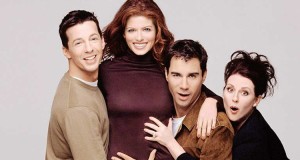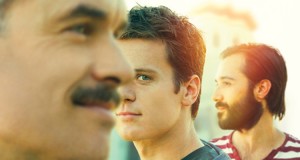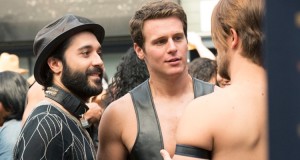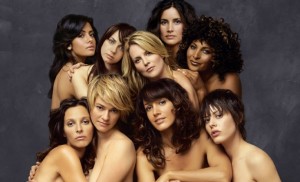[dropcap size=small]S[/dropcap]neaky-funny…” (The New Yorker). “..enticing…” (Hypable). “…wispily and magically sexy…” (Vanity Fair). Why is HBO’s gay TV show Looking getting such rave reviews in the US and the world around and what makes it different from popular predecessors like Queer as Folk and Will & Grace? Björn Birgir Ingimundarson takes a closer look and tells you why.
Steamy gay sex on prime time TV
In recent years LGBT characters have multiplied on screens big and small. Clear examples of this are TV shows like Ellen which paved the way for Queer as Folk and Will & Grace (both came out in 1999) and later Sex and the City, True Blood, Buffy the Vampire Slayer, Ugly Betty, Six Feet Under, Gray’s Anatomy, ER, Brothers & Sisters, Pretty Little Liars, Orphan Black, Black is the New Orange, Modern Family and Glee – to name just a few – where LGBT characters appear, though more often than not, in supporting roles. TV shows solely based on the lives of gay men and lesbians are on the other hand still somewhat of a rarity.

Queer as Folk (the UK version) is the first show I can remember seeing that falls into the latter category. At the time it was a huge breakthrough, not only for making gays visible but also for its honest portrayal of gay sex – who knew what rimming was before “those scenes” were depicted – which I was amazed a big TV channel like Channel 4 would air during prime time. That said, I never really identified with any of the characters, their wild lives and non stop sex, even though I spent time in Manchester on the very streets where the scenes were filmed when the show came out. And it was certainly not something that I could sit down and watch with, say my parents. Unlike Will & Grace.
Flaming queens or conservative lawyers, what USA’s Will & Grace did, it showed my parent’s generation how diverse gay people can be, basically just like anyone else. A very funny “harmless” fair you could watch with about anyone, ranging from your 5-year-old nephew to your 85-year-old grandma. It was actually so “harmless” that, unlike Queer as Folk, the

characters, even as witty and finger snapping as they were, were never shown having sex, hardly even sharing a kiss. Actually, I couldn’t even imagine them having sex. The characters didn’t even do things you, well at least I, could wholeheartedly disapprove of, leaving me with the sense that they were both two-dimensional and hard to identify with. We all know that real people sometimes make wrong choices.
This is where Looking comes into the picture, truly different from many earlier LGBT shows as it “gives a glimpse of real gay life in San Francisco” as Indiewire puts it (actual shops and restaurants make the setting just like New York’s landmarks did in Sex and the City). Or as I see it, a glimpse into gay life that could be in any city in the Western world.
The appeal of Looking
Awkward dates, unglamorous sex and “boyfriend troubles”. Unlike purely comedic Will & Grace or steamy hot and sexy Queer as Folk HBO’s Looking is all about real people with real issues. Nothing outrageous, just ordinary. People who sometimes make bad choices. People that happen to be gay. People that feel so real you can easily relate to them. Or as director Andrew Haigh (known for understated gay movie Weekend, 2011) recently said in an interview with the Guardian: “[What’s missing on TV] is the everyday nature of being gay. It’s watching telly and eating pizza with your boyfriend, or lying in bed and having a kiss and cuddle, or going to clubs and fucking in the ass.” And that is exactly what Looking excels at.

The show focuses on the life of 3 gay friends living in San Francisco. Complicated main character Patrick (Jonathan Groff), a 29-year-old video game designer whose good at his job without being high-flying, nice without being extremely witty and finger snapping like the characters in Will and Grace and likes to think he’s managed his life even though he’s far from it. His social skills are awkward and his most refining relationship, when we meet him, is with his mother. Agustin (Frankie J Alvarez), Patrick’s best friend from college is a failed artist, the other, Dom (Murray Bartlett), slightly older (40) and stuck in a dead-end job waiting tables, wondering where his life is going and whether he should make some major changes. Faulty characters you won’t fall head over heals for in the beginning but slowly grow on you with every episode.

The same could be said about the show itself. Nothing big and showy happens in the pilot and it isn’t till the 3rd episode that we had an idea where the story is going (up until then it feels a bit like an indie film) and things really start to get heated.
It’s a show very much about gay life today and benefits from numerous references to modern culture (Facebook, Instagram and OK Cupid), some quite funny and sarcastic like when Patrcik says “Instagram filters have ruined everything, I can’t tell if this guy is hot or not”, or when Dom elegantly tells his friends that “at 40, Grindr sends you your death certificate”.
A show that makes you wonder how gay people are presented in the media. How our straight counterparts see us. What it means to be gay and it even makes you re-evaluate your own life. And all these things combined is what makes Looking smart, sensible and interesting to watch. Or as The Wrap claims a show that’s rewards “viewers who can hang on beyond the first episode and can adapt to its much slower pace and more naturalistic shooting style.”
More of Patrick please!

Despite a lot of good reviews Looking opened with low ratings in the US (maybe due to its realistic tone, somewhat slow pace in the first episodes and criticism for a lack of diversity in characters – most of the main characters are white gay males, youngish and strikingly handsome). But viewing figures steadily grew and it has been announced that HBO has picked Looking up for a second season (filming starts this year). Which is great because Looking is the first mainstream TV show that focuses on gay people since Showtime’s The L Word ended its sixth season run in 2009 (that’s five years people!). And great because we need more leading, believable and deeply compelling LGBT characters in film and on TV, characters which we care for, relate to and who can sometimes give us a little break from our own reality, work, personal life and politics (Looking doesn’t address LGBT political issues – the word “progress” is never used, which is maybe progress in itself). The first season of Looking consists of only eight episodes (!) and I’m already desperate for more.


